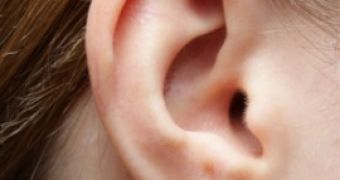Besides pacemakers, which turn the kinetic energy of a beating heart into electricity and thus power themselves, the future could also bring us implantable medical devices that use the mammalian ear as their energy source.
According to a study published only yesterday in the journal Nature Biotechnology, a team of MIT researchers succeeded in developing a new type of implantable medical devices, which draw power from the ear itself.
More precisely, they have their energy demands met by the ions found within a chamber in the internal ear of mammals, whose natural function is that of driving neural signals.
According to the scientists who have developed these innovative medical devices, their main goal would be that of constantly monitoring the biological activities taking place within the ear of people who are hearing and/or balance impaired.
However, it is also possible that, as new technologies develop, these ear-powered implantable devices could help improve on various medical conditions that manifest themselves as a result of faults in the makeup of one's ear. Phys Org quotes otologic surgeon Konstantina Stankovic, who made a case of how, “We have known for 60 years that this battery exists and that it's really important for normal hearing, but nobody has attempted to use this battery to power useful electronics.”
After implanting such medical devices in the ears of guinea pigs, the researchers found that neither their hearing ability, nor their balance was affected in any way.
However, the medical devices succeeded in keeping the scientists up to date with respect to the chemical conditions within the guinea pigs' ears via a wireless data transmission system.
“The fact that you can generate the power for a low voltage from the cochlea itself raises the possibility of using that as a power source to drive a cochlear implant,” explains specialist Cliff Megerian.
Furthermore, “If we could tap into the natural power source of the cochlea, it could potentially be a driver behind the amplification technology of the future.”

 14 DAY TRIAL //
14 DAY TRIAL //